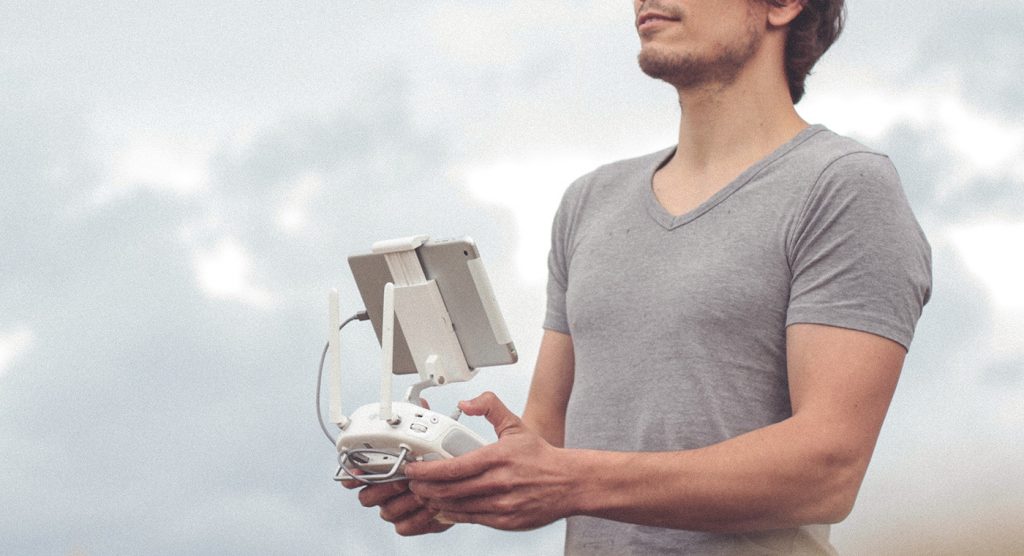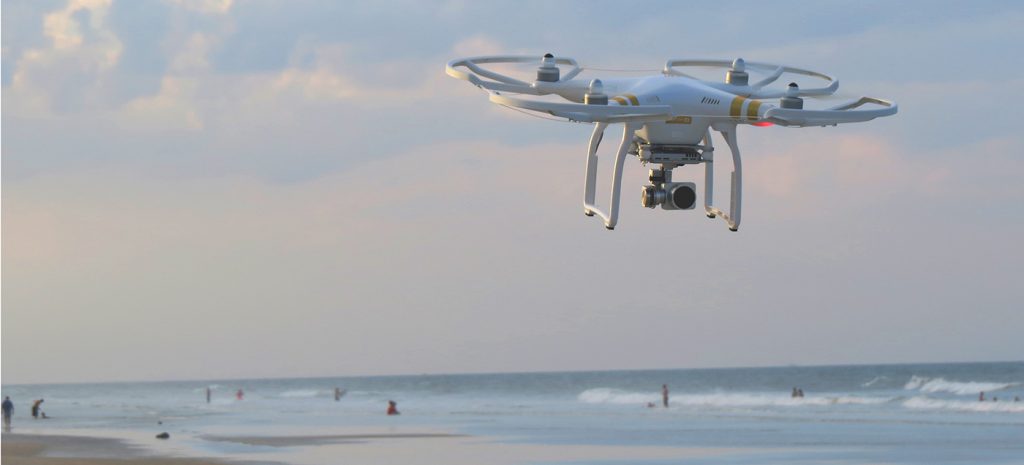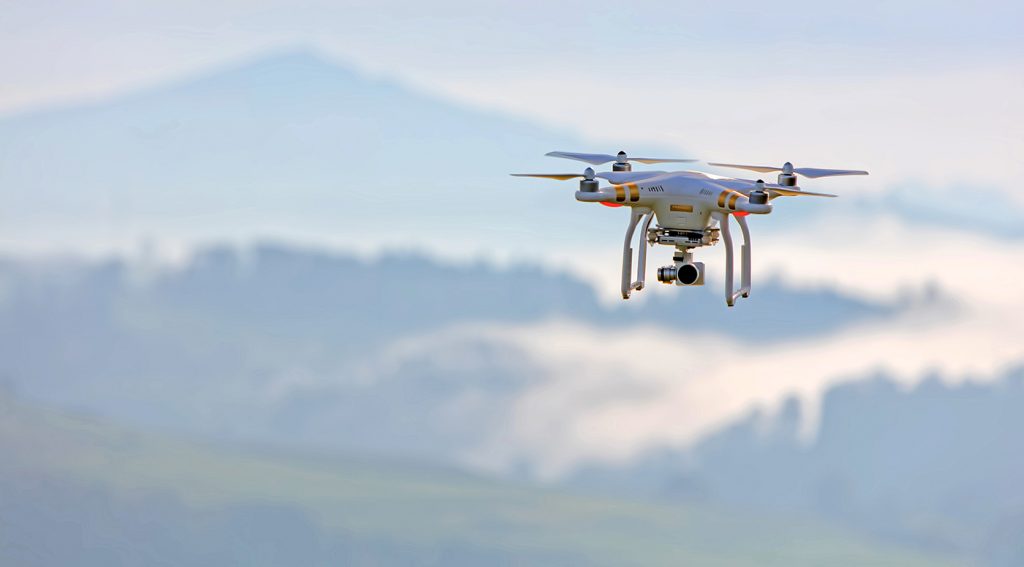By now, you probably have a handle on the basics of flying a drone. You may have even taken your first drone flying course. The next step is spinning your footage into cinematic gold.
The question is: How?
Between the wind, lighting, and limited flight times, it can be challenging – but with a few tricks up your sleeve, you’ll be able to turn your drone footage into a masterpiece.
In this article, the team at Ted’s Cameras shares their 5 tips for filming cinematic drone footage:
1. Learn the common drone shots
Believe it or not, the most cinematic drone shots are actually quite common. These include the following:
- The reveal shot – This focuses on the foreground, and slowly moves past the foreground to reveal something that’s hiding in the background. For example, you might start by filming a hill, and then move your drone to show the sun rising behind the hill. The reveal shot adds depth and texture to your drone footage, which automatically makes it more cinematic.
- The tilt reveal shot – For sweeping shots of your scene, try the tilt reveal. To do this, point the drone downwards, and then slowly tilt the gimbal up to uncover the landscape below. This is a great way to establish your scene and give your viewers the context they need.
- The top down shot – With the top down shot, you simply point the drone down and hover it in place, or fly it in a straight line. For a cinematic effect, try to film a moving subject, such as a driving car or flowing river.
- The orbit – This one’s a little trickier, but the results are rewarding. To master the orbit, you want to fly around the subject, making sure the drone is facing the subject the whole time. The key is to keep the drone smooth and steady as it moves.
With a little bit of practice, you’ll be able to identify and copy these movements. And if you have a high-end drone, some of them may already be pre-programmed into your drone. If so, take advantage of those modes. This will give your viewers the impression that you’re an experienced pilot – even if you’re new to flying!
Top Tip: Aim to film during the ‘golden hours’ – just before sunrise and sunset. The light is warmer and softer, which means there will be less work in the editing stage.

2. Film slowly
Unless you’re hot on the trail of a fast-moving subject, there’s no need to fly your drone at top speed. Slower movements can successfully draw viewers into your work. It also helps you behind the scenes. By slowing down, you’ll reduce the chances of ending up with distorted, bumpy footage. So, avoid jerky movements, and focus on long, coasting movements and panning shots. This will leave you with natural and cinematic footage. Subtle zooming helps to reel your viewers in, too.
Top Tip: While you’re playing around with drone shots, consider colour grading. To save time, make sure the grade on all your footage is consistent from the get go – otherwise it may look amateurish.
3. Think carefully about composition
Sometimes, we get caught up in the sheer majesty of the scene we’re filming that we forget to watch our footage with a critical eye. Just like all visual mediums, composition can make or break drone footage. It can be the difference between hooking a viewer, or distracting or frustrating them.
To nail your composition, look for eye-catching scenes that hold their own as a balanced image. An easy way to do this is to search for symmetry, such as patterns and lines. Symmetry is everywhere, from fields and rivers to city streets, and shining a spotlight on it will make your drone footage more mesmerising. You can also try following the Rule of Thirds, or flying your drone closer to natural elements like rocks and trees to add depth and texture to your footage.
Top Tip: Unsure where to look? When you’re researching filming locations, turn on Terrain View in Google Maps.

4. Experiment with shorter scene cuts
You’re not only a drone flyer – you’re also a videographer. As a videographer, we understand that every second of footage is precious to you. But it’s important to know when to call ‘cut.’ Like with any video piece, there’s only so long you can film before it begins to get boring, and the viewer’s mind starts to wander. If you can learn to cut each scene before it reaches that stage, you’ll have a better chance of holding the viewer’s attention. You’ll also end up with a more impressive finished product.
Top Tip: Plan for shorter scenes when you’re filming and capture your subjects from various angles, as opposed to one long shot.
5. Adjust your frame rate
There isn’t a ‘right’ cinematic frame rate. It’s a personal preference. That being said, the frame rate can have a dramatic effect on the look and feel of your drone footage. To decide on a frame rate, think about the type of outcome you’re going for. If you want a classic, real-life look, we suggest setting your drone at 30 frames per second, or even 24 frames per second if you don’t mind a little motion blur. If you’re hoping to capture the smoothest video possible, or you’re attempting slow motion, your frame rate should be at least 60 frames per second. You could even go as high as 120.
Top Tip: Post-production can transform your footage into a cinematic masterpiece. To start, edit out any dark or shaky footage, and then tweak the exposure and colour so it’s consistent. Finally, spend some time on sequencing your scenes into a logical order that tells a story.
Talk to the experts
If you have questions, drop by your local Ted’s Cameras store and chat to their seasoned flyers about making your drone footage more cinematic today!
Keen to learn how to fly a drone safely in Australia? Our Remote Pilot’s Licence Courses will provide you with the theoretical and practical training you need to fly with confidence, and be fully licenced to conduct commercial operations with your drone! With our trainers by your side, you’ll be ready to put your cinematic drone skills to good use in no time. Check out our wide range of courses today.










